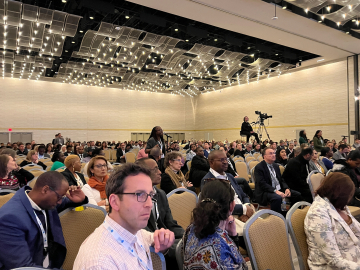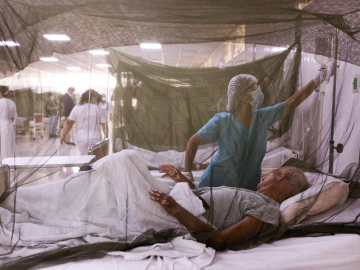Let’s End the Fuzziness in Universal Health Coverage
The global health community is gathering this week in Astana, Kazakhstan, to mark the 40th anniversary of the 1978 Alma Ata conference on primary health care. This time around, primary health care is being framed through the lens of universal health coverage (UHC). While everyone agrees that UHC is the right aspiration, the term has come to mean all things to all people, a catch-all with multiple proposed interpretations. The problem with this fuzzy language is that, without specificity, UHC risks being an empty promise.
What does UHC mean, exactly? The WHO definition is the lodestar: all people have access to needed, effective health services and using these services does not cause financial hardship. But which effective services do we mean? How will they be delivered? And how will they be financed in a way that protects people from financial risk? When governments say they will provide UHC, they shouldn’t use vague notions: UHC should be a guaranteed promise of explicitly defined, publicly funded services.
In our new paper, “Alma Ata at 40: Reflections from the Lancet Commission on Investing in Health,” co-authored with 21 colleagues, we try to clarify the fuzziness surrounding UHC. Our starting point is “a concrete notion of UHC that makes use of an explicitly defined, guaranteed, publicly financed set of essential health interventions.” Building on evidence from the Disease Control Priorities project, we define a package of 218 unique interventions as “essential UHC” (EUHC), based on being locally relevant, feasible to implement, pro-poor and providing high value for money.
These interventions tackle infections, noncommunicable diseases and injuries, and include surgery, palliative care and rehabilitation. All but 20 can be delivered in primary care settings. We show that extending this package to everyone would achieve the “40 by 30” target in Sustainable Development Goal 3 (i.e., reducing premature mortality from all causes in people aged under 70 years by 40 percent by 2030).
Is EUHC affordable? With anticipated economic growth, by 2030 most middle-income countries will be able to afford EUHC delivered through primary health care. However, many low-income countries could struggle unless their macroeconomic conditions improve; these countries are likely to need external financing for years to come.
It should be noted that even this UHC package, providing only the very cost-effective interventions, will require hugely increased spending. It will cost, on average, about $100 per person—much higher than the $20 per person that governments are spending across low- and lower middle-income countries. These numbers show the perils in advocating that governments must immediately fund “everything for everybody.” This is the right vision, but what’s the financing plan?
To be clear, we passionately believe that healthcare for all must be the goal, and that governments should spend the minimum of $100 per person to achieve this. But where public resources are scarce, investments should be distributed fairly in a way that gets the most health for the money and that disproportionately benefits the poor. As countries’ economies grow, they can expand their UHC packages.
Countries will also need to contextualize and adapt EUHC and use it as one of many inputs into their pathway towards high-quality, affordable services for all. That’s our aim in publishing our vision of EUHC.
We also hope to start a much-needed discussion about what we mean when we say UHC. If you don’t like our definition, tell us on Twitter (@gyamey and @davidawatkins) how to improve it. But be specific about the exact interventions, their delivery and costs, their estimated impact and how they’ll be funded. If you’re not defining these terms, then what are you really saying?
Gavin Yamey is a professor of Global Health and Public Policy at Duke University, where he directs the Center for Policy Impact in Global Health at the Duke Global Health Institute. Twitter: @gyamey
David Watkins is an assistant professor of General Internal Medicine at the University of Washington and a physician at the Harborview Medical Center in Seattle. Twitter: @davidawatkins
Join the tens of thousands of subscribers in more than 100 countries who rely on Global Health NOW summaries and exclusive articles for the latest public health news. Sign up for our free weekday enewsletter, and please share the link with friends and colleagues: http://www.globalhealthnow.org/subscribe.html
The line begins at dawn in Myameyamu, Zambia for a monthly clinic that provides the only essential medical services for miles. Image: © 2012 Malcolm Spence/On Call Africa, Courtesy of Photoshare




